The meeting in Greece took place from 13 till 17 December 2021.
Despite the pandemic, being cautious, we managed to realise several activities, balancing project work and enjoying ourselves.
In what follows, the Greek team provides an overview of this meeting.
On Monday 13th of December, all of our partners of the project “Tourism, Enogastronomy and Culture”, Italian and Croatian, gathered at our school, the 3rd Lykio of Galatsi. They joined the Greek team, and we all participated in a welcome ceremony with ice-breaking activities, program presentations, and a tourist guide for the following days. A web design workshop took place after the presentations as the undertaken activity of the Greek team was the construction of a website. The first day concluded with lunch, including traditional Greek flavours.
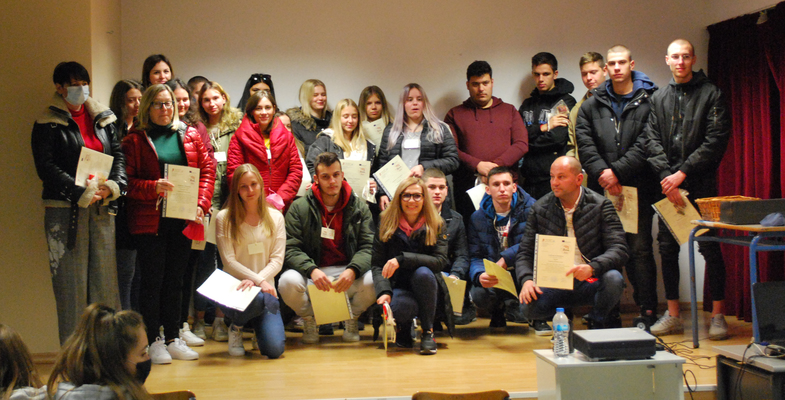
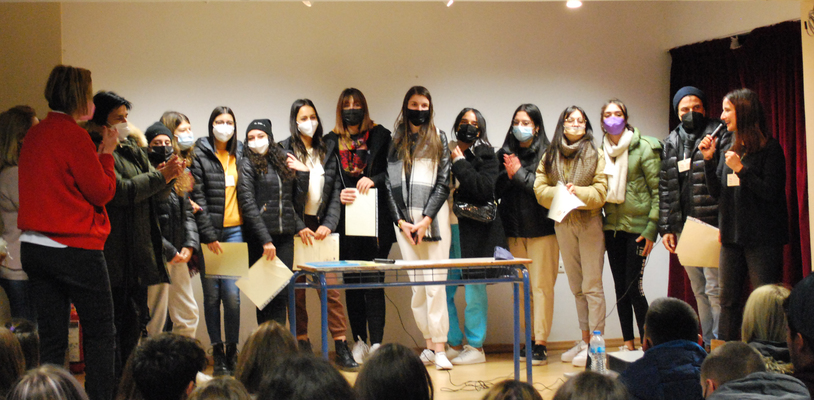
On Tuesday 14th of December, all the partners departed for Nafplion to visit the tourist attractions and participate in activities related to our project. Our first stop was at the Corinth canal. The Corinth Canal is the canal that connects the Saronic Gulf with the Corinthian Gulf, on the site of the Isthmus of Corinth, just east of the city of Corinth. In modern times the role of the canal in the Greek economy and shipping is limited as most merchant ships can not cross it. Every year 12.000 ships cross the canal. Our partners enjoyed the view, rested and were guided to this interesting place.
The next stop on our route was Epidaurus. We visited the Ancient Theatre of Epidaurus and the sanctuary of Asklepios, a Tourist attraction and a venue for an annual cultural festival. Greek students presented the history of the monuments. Also, some students organized an improvised performance of an ancient tragedy on the stage of the ancient theatre. Our European partners experienced what exactly was the ancient tragedy, which is a critical piece of ancient Greek poetry but also the beginning of Theater worldwide.
When we arrived at our accommodation, the Amalia Hotel in Nafplio, we interviewed the hotel chef and discussed about the local cuisine and how it is introduced to hotel guests.
On Wednesday 15th of December, our first tourist goal was the tour of the Palamidi fortress. Palamidi is a fortress to the east of the Acronauplia in the town of Nafplio in the Peloponnese region of southern Greece. The fortress has an impressive view over the Argolic Gulf, the city of Nafplio and the surrounding country. The most interesting for our partners was its history. For example, the history of the fotress’ eight bastions includes that they were originally named after the Venetian occupators. However, when it fell to the Ottoman Empire, the bastions were given Turkish names. Lastly, when the Greeks overthrew the Turks, the bastions were renamed after ancient Greek leaders and heroes (Epaminondas, Miltiadis, Leonidas, Fokion, Achilleas and Themistoklis). The two remaining bastions were named after St. Andrew (Agios Andreas) and the French Philhellene Robert who died in battle on the Acropolis of Athens. The “Miltiades,” was used as a prison and among its walls, a hero of the Greek revolution, Theodoros Kolokotronis, was held. All this historical information triggered a discussion between students about the history of each nation and how the European Union reflects this plurality.
Afterwards, we did a scavenger hunt in historic Nafplio town. It was a pleasant way to discover the cultural diversity of Nafplio. Using an online tourist guide made by the Greek students, we could discover and enjoy the place. In order to enjoy the natural beauty of the surrounding area, we walked to Arvanitia Promenade, one of the most popular walks in Nafplio. It starts at the end of the shore and leads to Arvanitia Square, a total distance of about 1 kilometre. We admired the incredible natural landscape and discussed how it can be preserved. When we returned to the hotel we had dinner. This dinner with local delicacies and Greek flavors allowed our partners to get to know and enjoy Greek cuisine. Later, we organized a “Nafplio by night” activity, allowing everyone to experience the role of entertainment in tourism.
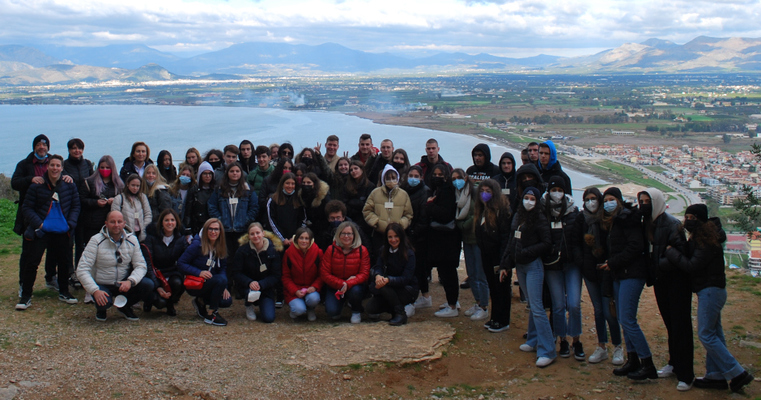
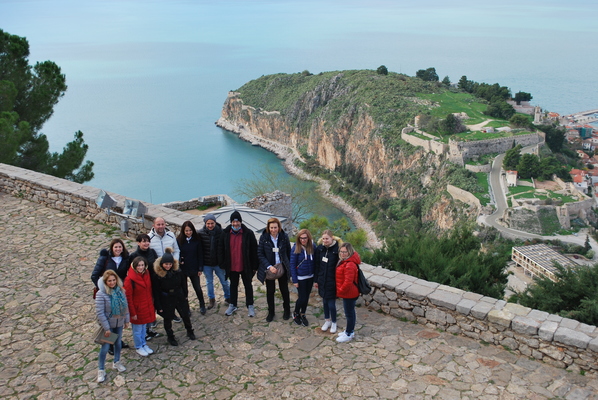
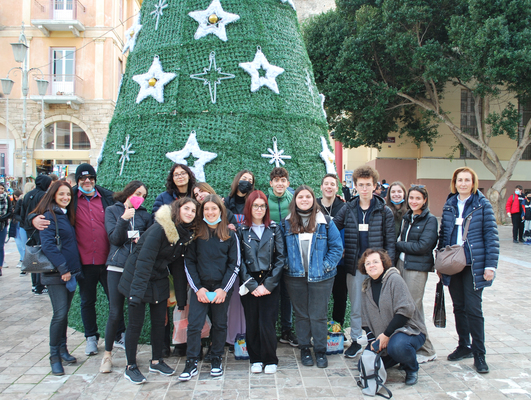
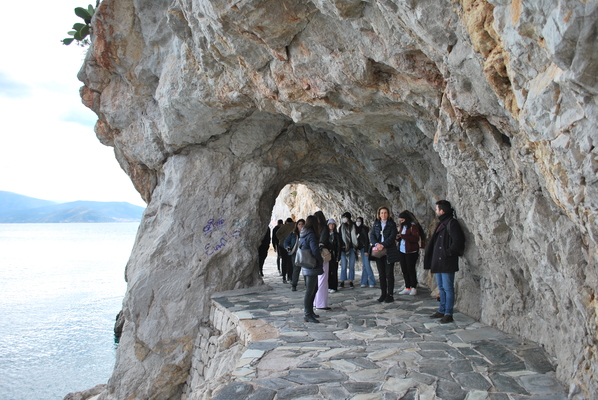
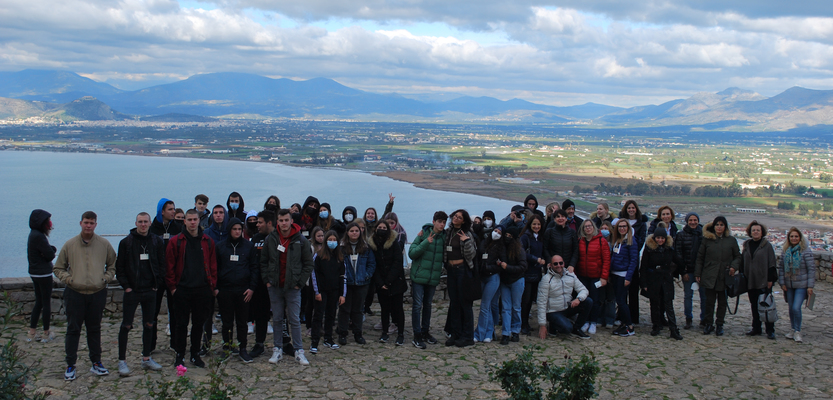
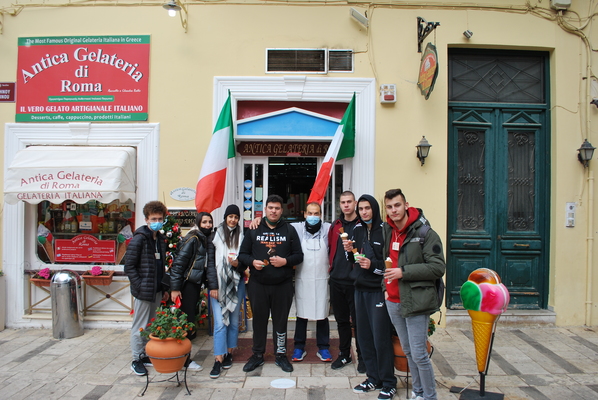
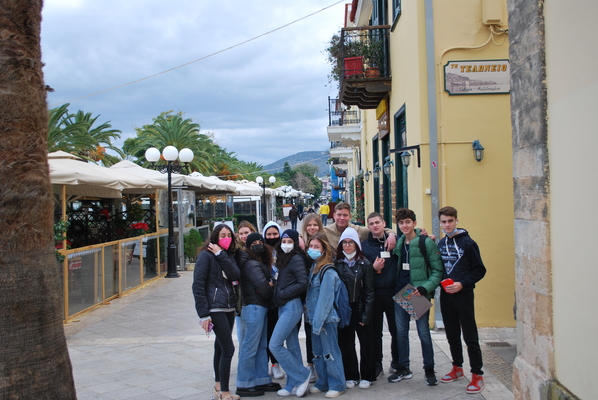
On Thursday 16th we returned to Athens. On our way, we visited the archeological site of Nemea. There we saw the sanctuary of Zeus, which was built in the 6th century BC. In the surrounding area of the temple there is a stadium where the Nemean Games were taking place in the 6th century B.C. There, we discussed the importance of games and festivals in the life of the ancient Greeks. Also, at this stadium, students from all three countries and their teachers competed in running. Everyone enjoyed the competition and medals were nominated to the winners.
In addition, as Nemea is a place closely associated with wine, we decided to visit a local winery and taste some varieties of wines, learning much information about their preparation and preservation. In the evening, we reached Athens. At our school, the 3rd Lyceum of Galatsi, all the partners made presentations of our work related to the program. Then, the certificates of attendance in the project were awarded, and participants evaluated the meeting. We concluded this day with a treat of traditional Greek dishes.
On Friday 17th We went sightseeing in the historic centre of Athens. We visited the Acropolis so that our partners cherish such precious memory. In addition to visiting the Acropolis hill, we also visited the museum, where we enjoyed a guided tour by Greek students organized around a worksheet to be effective and enjoyable.
Then we walked to Monastiraki and Psyri areas to witness how these former artisanship areas have grown into Boheme neighbourhoods.
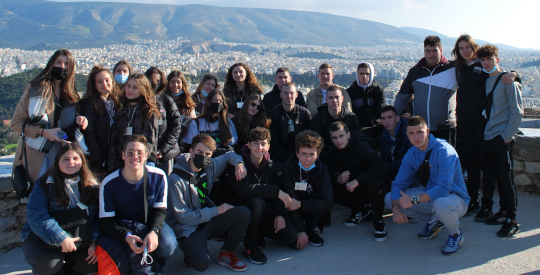
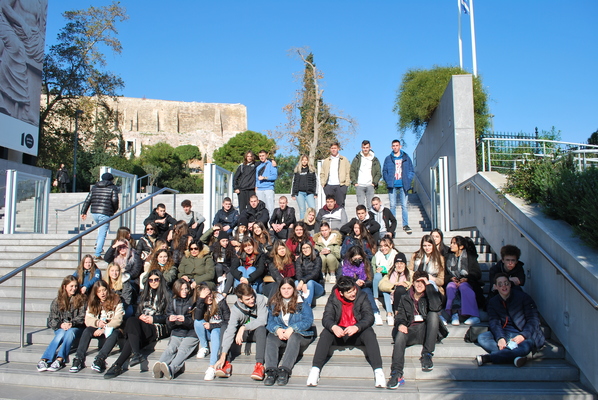
The Greek team practised tourism promotion during the meeting by creating the following Google map https://bit.ly/MapTourEnoCult that contained customised information about all the sights that we visited during the meeting:
Also, the Greek team prepared and utilised:
- narratives for Isthmus of Corinth, Epidaurus sanctuary, Nemea archaeological site, Palamidi fortress, Nafplio historic town, and Bourtzi.
that were used during sightseeing.
- Worksheet at the Acropolis museum
- leaflet for the monuments in the Acropolis hill
- leaflet for the Parthenon architecture